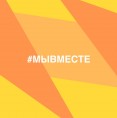- Awarding the winners of the «Human Rights-2019» contest
- 30 years of the Velvet Revolution in Czechoslovakia
- Political Theatre of the USSR
- Staff of the Department of Sport, Arts and Culture of the Republic of South Africa visited the Museum
- The seminar «75 Years of the Liberation of Northern Norway from the Nazi Invaders by the USSR Army»
- The museum's photofund has been replenished with new exhibits
- The museum celebrated its 100th anniversary
- The State Museum of Political History of Russia is 100 years old!
- The museum won the international contest «Živa»
- The museum won the «The Museum Olympus» contest in two nominations
- Opening of the exhibition «People want to know»
- A special purpose museum
- The Leningrad Affair: the City and the People
- Opening of the exhibition “The Osoaviakhimers”
- Opening of the exhibition “Germans in Russian History”
Opening of the exhibition “The Osoaviakhimers”
A new exhibit titled “The Osoaviakhimers”, 1 has opened in the State Museum of the Political History of Russia as part of the ongoing series “A Painting as a Document of the Epoch”. Artist Krill Khnykin painted a picture titled “The Osoaviakhimers” in 1939, when he was a student at the Leningrad Institute of Painting, Sculpting and Architecture. The work of the young artist immediately became part of the collection of the State Museum of the Revolution (the predecessor to the State Museum of the Political History of Russia).
“The series of exhibits, ‘Picture as a Document of the Era’ not only helps [us] in looking at the history of our country from different angles, but also in showcasing lesser-known works of Soviet painters and giving those paintings a second life”, said Evgeny Artemov, the General Director of the museum at the opening of the exhibit. This is the first time Khnykin’s canvas has left the museum archive. “This year we are celebrating the jubilee of the painting. It’s turning 80 years old, yet Khnykin’s work has never previously been featured in an exhibit”, added Chief Curator Svetlana Khodakovskaya.
The Society for the Promotion of Defense, Aviation and Chemical Construction (SPDACC) was founded in 1927. Among its tasks were the patriotic upbringing of Soviet citizens and preparedness for war. All throughout the country, flying clubs, shooting ranges and military sports clubs were created, where young people developed their skills as parachutists, pilots, medics and radio operators. The painting is accompanied by a sculpture of the famous pilot Valentina Grizodubova (which was acquired by the museum from the collection of Kirill Nabutov), as well as by posters from the time period and Osoaviakhimers badges and membership cards.
Divisions of the organization were active throughout the entire country. Accordingly, a congratulatory letter from the SPDACC chapter of the Azerbaijani SSR to Georgiy Straube, a pilot who participated in the rescue of Umberto Nobile is also on display in the exhibit. The rescue took place in 1928, when an Italian scientific expedition headed for the north pole crashed their blimp with all expedition members aboard. A Soviet rescue mission on the icebreaker “Krasin” set out to assist.
In the 1930s, the political situation in the world was tense, and divisions of the SPDACC prepared Soviet citizens for the possibility of mobilization. A poster from 1934 by the artist Irakli Toidze serves as a reminder of this reality: “Fill the ranks of the SPDACC! Provide faithful defense to the socialist homeland!”
“As it happens, today people rarely remember the history of the SPDACC”, said Aleksandr Smirnov at the exhibit opening. Smirnov is a researcher at the State Museum of the Political History of Russia and co-author of the exhibit. “Before I took this job, I could never have imagined the meaning this organization carried in the life of the USSR.” Smirnov reminds us that legendary pilots such as Valery Chkalov and Valentina Grizodubova, aircraft designers such as Aleksandr Yakovlev and Oleg Antonov, and Sergei Korolev, a designer of rocket and space systems, all attended and graduated SPDACC schools. SPDACC members even participated in the anti-aircraft defense of Leningrad. All throughout the country, millions of people received important skills, which proved useful during WWII.
The exhibit will be featured in the Oak Reception Room of the Brant Mansion until April 3rd.
1 Osoaviakhimers (Russian: Oсоавиахимовцы, translit. Osoxaviamotsi) is a term used to refer to the members of the “Society for the Promotion of Defense, Aviation and Chemical Construction.” It is derived from an abbreviated version of the organization’s name, which was a common practice in the early Soviet period. A conceivable equivalent in English would be something on the order of “SPDACC-ers”, but in general, the term is not translatable.
















